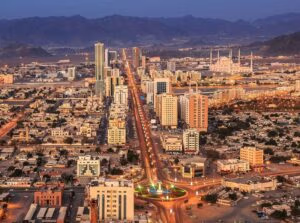Few infrastructure investments deliver as powerful a combination of economic growth, energy security, and sustainability as cross-border electricity interconnectors. These high-capacity transmission links allow nations to trade power efficiently, tap into diverse generation resources, and optimise system costs. They represent a distinctive category of long-lived infrastructure with clear revenue models, measurable economic benefits, and strategic relevance in an era of shifting energy geopolitics.
Why Interconnectors Matter to Economies
At their core, interconnectors reduce the combined cost of supplying electricity between trading partners. By pooling resources and accessing the lowest-cost generation available at any given time, interconnected systems can avoid expensive peak-time capacity investments, reduce fuel costs, and increase generation efficiency.
A World Bank–linked study estimates that interconnection can cut overall generation costs, improve system reliability, and directly support GDP growth by avoiding productivity losses from outages. These benefits are not theoretical. In Europe, extensive interconnection has already delivered lower wholesale electricity prices, reduced carbon intensity, and increased resilience.
The multiplier effect extends well beyond the power sector. Lower and more stable electricity costs improve competitiveness for energy-intensive industries, support investment in new manufacturing, and enable higher value-added services. This, in turn, strengthens national balance sheets, widens the tax base, and creates employment while enabling a cleaner energy mix.
Financing and Risk Management
Interconnectors sit firmly in the category of regulated infrastructure. Revenue models often combine market-based income from capacity auctions with regulatory mechanisms such as the “cap and floor” approach used in the UK, which provides downside protection for investors while ensuring value for consumers.
This balance of risk and reward makes them attractive to infrastructure funds, sovereign wealth funds, and institutional investors seeking stable, inflation-linked returns. Capital intensity is high, but so is the asset’s longevity. Well-maintained interconnectors can operate for four decades or more.
The UAE–India Example: A Regional Growth Engine
The proposed UAE–India interconnector is a visionary project that illustrates the transformative potential of this technology. Stretching across the Arabian Sea, it could link the UAE’s fast-growing renewable generation capacity with India’s enormous and rising electricity demand.
Economically, such a link could optimise generation portfolios by enabling each country to access lower-cost power at different times of day or year, reducing reliance on expensive peaking plants. It could facilitate green power trade by allowing surplus UAE solar output during daylight hours to be exported to India, and potentially importing wind or other resources in return. It could also increase energy security by diversifying supply sources and reducing vulnerability to domestic generation disruptions or fuel market volatility.
The GCC Interconnection Grid already links six Gulf states, and there is growing policy interest in extending these links to wider regional partners. With the right commercial framework, the UAE–India route could catalyse a broader South Asia–Middle East power market, unlocking economies of scale and investment opportunities in both regions.
Global Context and Competitive Advantage
Globally, interconnectors are increasingly seen as enablers of electricity market integration. In Europe, market coupling and coordinated system operation have created more liquid power markets and lowered consumer prices. In Africa and Latin America, regional power pools are improving reliability and reducing generation costs.
The UAE is well-positioned to leverage its geographic location, robust capital markets, and renewable energy investment track record to become a central hub in future interconnection networks. This positioning could anchor new trade flows in electricity, much as it has in oil, gas, and logistics.
From Vision to Bankable Project
Turning interconnectors from vision to reality requires robust economic modelling to ensure benefits are equitably shared between partners and stakeholders, clear regulatory frameworks to govern market access, pricing, and operational coordination, and innovative financing structures that blend public and private capital while managing construction and operational risks.
Conclusion
Electricity interconnectors are strategic economic assets. Investors can expect stable returns underpinned by tangible consumer benefits. For economies, they provide one of the pillars for sustainable growth: energy resilience. Interconnectors should be at the forefront of the conversation and on the radar of every serious infrastructure investor.






